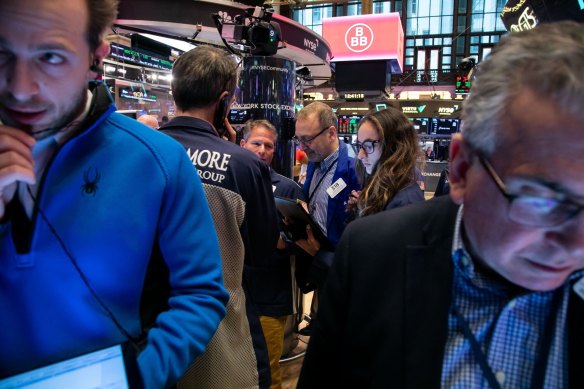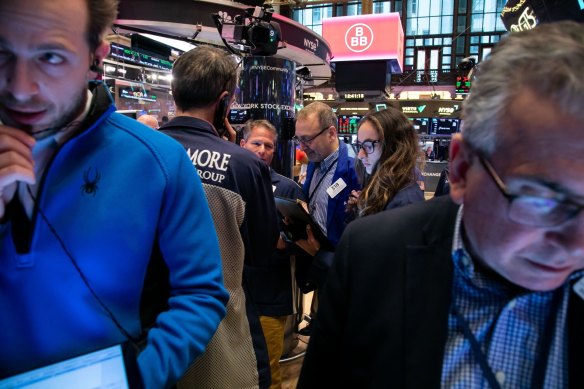As a whole, Wednesday’s forecasts suggest that the policymakers expect the US economy to continue enjoying an unusual combination: A healthy job market and economy in tandem with inflation that continues to cool — just more gradually than they had predicted three months ago.
The Fed’s officials signalled that they also now foresee their benchmark rate as being higher in the future than it was in recent years — high enough to keep inflation in check but low enough to keep the economy growing. They had long pegged this “neutral rate” at 2.5 per cent. But on Wednesday, the officials estimated that it’s now 2.6 per cent. If so, this means rates are less likely to return to the ultra-low levels that prevailed for years before the pandemic struck.
When the Fed raises its benchmark rate above the neutral rate, it seeks to slow growth and tame inflation. If the neutral rate is actually higher than the Fed had thought, it means its benchmark rate should be higher, too, to cool the economy and inflation.
Most economists have pegged the Fed’s June meeting as the most likely time for it to announce its first rate cut, which would begin to reverse the 11 hikes it imposed beginning two years ago. The Fed’s hikes have helped lower annual inflation from a peak of 9.1 per cent in June 2022 to 3.2 per cent. But they have also made borrowing much costlier for businesses and households.
Two recent government reports pointed to higher-than-expected inflation. One showed that consumer prices jumped from January to February by much more than is consistent with the Fed’s target. The second showed that wholesale inflation came in surprisingly high — a possible sign of inflation pressures in the pipeline that could cause consumer price increases to remain elevated.
Those two inflation reports, Powell said, “haven’t really changed the overall story, which is that of inflation moving down gradually on a sometimes bumpy road towards 2 per cent.”

Wall Street was heartened by Powell’s comments.Credit: Bloomberg
Though consumer inflation has tumbled since mid-2022, it has remained stuck above 3 per cent. And in the first two months of 2024, the costs of services, like rents, hotels and hospital stays, remained elevated. That suggested that high borrowing rates weren’t sufficiently slowing inflation in the economy’s vast service sector.
While the Fed’s rate hikes typically make borrowing more expensive for homes, cars, appliances and other costly goods, they have much less effect on services spending, which doesn’t usually involve loans. With the economy still healthy, there is no compelling reason for the Fed to cut rates until it feels inflation is sustainably under control.
At the same time, the central bank faces a competing concern: If it waits too long to cut rates, a long period of high borrowing costs could seriously weaken the economy and even tip it into a recession.
In most respects, the US economy remains remarkably heathy. Employers keep hiring, unemployment remains low, and the stock market is hovering at record highs. Yet average consumer prices remain much higher than they were before the pandemic — a source of unhappiness for many Americans for which Republicans have sought to pin blame on Biden.
Loading
And there are signs that the economy could weaken in the coming months. Americans slowed their spending at retailers in January and February, for example. The unemployment rate has reached 3.9 per cent — still a healthy level, but up from a half-century low last year of 3.4 per cent. And much of the hiring in recent months has occurred in government, health care and private education, with many other industries barely adding any jobs.
Other major central banks are also keeping rates high to ensure that they have a firm handle on consumer price spikes. In Europe, pressure is building to lower borrowing costs as inflation drops and economic growth stalls. The European Central Bank’s leader hinted this month that a possible rate cut could come in June, while the Bank of England isn’t expected to open the door to any imminent cut when it meets Thursday.
Japan’s central bank is moving in the opposite direction: On Tuesday, it raised its benchmark rate for the first time in 17 years, in response to rising wages and inflation finally nearing its 2 per cent target. The Bank of Japan was the last major central bank to lift its key rate out of negative territory, ending an unusual period that had led to negative rates in some European countries as well as in Japan.
AP
The Business Briefing newsletter delivers major stories, exclusive coverage and expert opinion. Sign up to get it every weekday morning.
Read More: World News | Entertainment News | Celeb News
SMH









